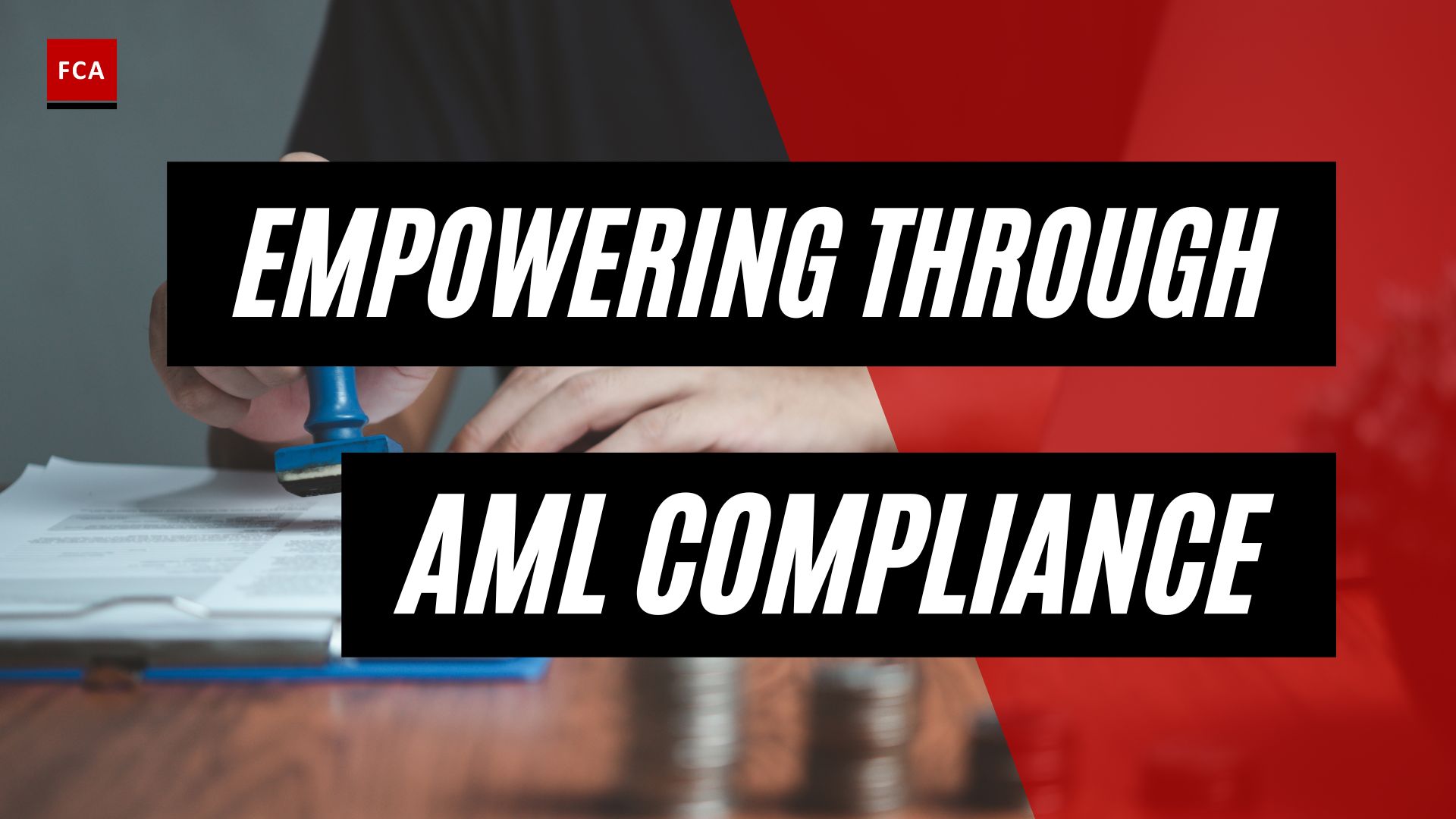Impact of COVID-19 on AML Efforts
The COVID-19 pandemic has had a significant impact on Anti-Money Laundering (AML) efforts worldwide. As criminal behavior patterns change, financial institutions and regulatory bodies face a range of challenges in combating money laundering and fraudulent activities. In this section, we will explore the changing criminal behavior patterns, the increase in fraudulent activities, and the challenges in transaction monitoring.
Changing Criminal Behavior Patterns
The COVID-19 pandemic has forced criminals to adapt their behavior. With closed borders and disrupted transportation services, criminals have sought new ways to move illicit funds and goods across borders. Europe’s top banking regulator has instructed financial institutions to pay close attention to transactions linked to international trade, as criminals exploit the changes brought about by the pandemic (Napier). These changes in criminal behavior require enhanced vigilance and updated AML strategies to effectively detect and prevent money laundering.
Increase in Fraudulent Activities
The COVID-19 pandemic has witnessed a surge in fraudulent activities. Imposter scams, investment scams, product scams, and insider trading have become increasingly prevalent. Financial Crimes Enforcement Network (FinCEN) has reported these emerging trends connected to COVID-19, which are similar to scams that surface post-natural disasters. The Financial Conduct Authority (FCA) has also warned of an increasing number of scams likely to emerge in the future. Financial institutions must remain vigilant and adapt their AML measures to identify and prevent these fraudulent activities.
Challenges in Transaction Monitoring
The pandemic has presented challenges in transaction monitoring for financial institutions. Lockdowns and the preference for online shopping have led to an increase in digital transactions, while physical cash transactions have decreased. As a result, traditional transaction monitoring rules have become less effective, making it difficult to track and anticipate the direction of illicit funds generated from fraudulent activities. Financial institutions with legacy screening systems may face an influx of false positive alerts due to the anomalous nature of current transactions. This necessitates the adoption of advanced technologies and analytical tools to enhance transaction monitoring capabilities.
Financial institutions and regulatory bodies must adapt their AML strategies and controls to address the impact of COVID-19 on AML efforts. By understanding the changing criminal behavior patterns, addressing the increase in fraudulent activities, and overcoming the challenges in transaction monitoring, they can effectively combat money laundering and protect the integrity of the financial system. To learn more about AML compliance trends in the post-COVID-19 era, continue reading our article on aml compliance trends post-covid-19.
Regulatory Response to COVID-19
As the COVID-19 pandemic continues to impact economies and societies worldwide, regulatory bodies are also adapting to the changing landscape of anti-money laundering (AML) efforts. In response to the challenges posed by the pandemic, several regulatory measures have been implemented to enhance AML compliance standards and address emerging risks.
Delayed AML Law Implementation in Canada
Due to the impacts of COVID-19, there is an expectation that the implementation of new AML laws in Canada might be delayed. The Financial Transactions and Reports Analysis Centre of Canada (FINTRAC) has provided pandemic guidelines, emphasizing a risk-based approach to prioritize urgent money laundering cases while acknowledging the challenges faced by reporting entities (Napier). This delay allows for a more comprehensive understanding of the new AML requirements and provides reporting entities with additional time to adapt their compliance systems accordingly.
European Union’s AML Directive
The European Union (EU) has been proactive in enhancing AML compliance standards by implementing the Sixth Anti-Money Laundering Directive (6AMLD). This directive aims to address the increasing money laundering risks and challenges posed by the COVID-19 pandemic. The 6AMLD reinforces the EU’s commitment to combat money laundering and terrorist financing, focusing on strengthening preventive measures, enhancing cooperation between member states, and ensuring a harmonized approach to AML compliance within the EU.
Focus on Global Cooperation and Information Sharing
In light of the evolving financial crime landscape during the pandemic, there has been a greater emphasis on global cooperation and information sharing among regulatory bodies and financial institutions. Initiatives like the Financial Action Task Force (FATF) aim to strengthen international AML measures and collaboration. By sharing information and best practices, regulatory bodies and financial institutions can collectively combat money laundering and other financial crimes more effectively (Sanction Scanner).
These regulatory responses reflect the recognition of the evolving nature of financial crime risks during the pandemic and the need for a coordinated and proactive approach to AML compliance. By adapting existing regulations and implementing new directives, regulatory bodies are striving to stay ahead of emerging risks and ensure the integrity of the global financial system.
Enhancing AML Compliance Post-COVID-19
In the wake of the COVID-19 pandemic, the landscape of anti-money laundering (AML) compliance has undergone significant changes. Financial institutions and regulatory bodies have recognized the need to adapt their practices to address emerging risks and challenges. As we navigate the post-COVID-19 era, there are several key trends shaping the enhancement of AML compliance programs.
Emphasis on Customer Due Diligence (CDD)
Regulators and industry experts have emphasized the importance of robust customer due diligence (CDD) processes in mitigating money laundering risks effectively. Financial institutions are placing a stronger emphasis on risk assessment and continuous monitoring to ensure compliance with AML regulations. The post-COVID-19 era has highlighted the need for institutions to have a deeper understanding of their customers’ profiles and activities to detect and prevent illicit financial transactions.
By implementing comprehensive CDD measures, financial institutions can better identify and verify the identity of their customers, assess their risk profiles, and monitor their transactions for suspicious activity. This approach enables institutions to establish a strong foundation for AML compliance and safeguard against money laundering risks (Sanction Scanner).
Remote Onboarding Processes
The pandemic has accelerated the adoption of remote onboarding processes in the financial industry. With social distancing measures and limited physical interactions, financial institutions have increasingly utilized digital solutions and technologies for customer identification and verification. Remote onboarding enables institutions to comply with AML regulations while overcoming the challenges posed by the pandemic.
Through the use of secure online platforms and advanced identity verification tools, institutions can remotely authenticate customers, verify their identities, and perform necessary screening checks. These digital solutions streamline the onboarding process, enhance customer experience, and enable institutions to maintain compliance with AML regulations even in a remote working environment (Sanction Scanner).
Increased Resources for AML Compliance
Financial institutions have recognized the need to allocate additional resources to strengthen their AML compliance efforts. In response to the evolving risks and challenges brought about by the pandemic, institutions have increased their budget for Bank Secrecy Act/Anti-Money Laundering (BSA/AML) compliance.
According to a study, financial institutions increased their AML compliance budget by 13% from 2019 to 2020, highlighting a significant rise in resources dedicated to combating money laundering and terrorist financing activities post-COVID-19 (Sanction Scanner). These additional resources allow institutions to invest in advanced technologies, data analytics, and skilled personnel to enhance their AML compliance capabilities.
By allocating increased resources, financial institutions can stay ahead in the fight against financial crime, strengthen their AML controls, and effectively respond to emerging risks and regulatory expectations.
As the AML landscape continues to evolve in the post-COVID-19 era, financial institutions must adapt to these emerging trends. By placing a stronger emphasis on customer due diligence, implementing remote onboarding processes, and increasing resources for AML compliance, institutions can navigate the challenges posed by the pandemic while maintaining robust AML programs. These measures help protect the integrity of the financial system and contribute to the global fight against money laundering and illicit financial activities.
Financial Crime Risks During the Pandemic
As the COVID-19 pandemic continues to impact global economies, it has also given rise to several financial crime risks. Financial institutions and regulatory bodies are facing emerging threats, vulnerabilities in financial systems, and increased corruption risks. Understanding these challenges is crucial for effective anti-money laundering (AML) efforts in the post-COVID-19 era.
Emerging Financial Crime Threats
The Financial Crimes Enforcement Network (FinCEN) has reported emerging trends connected to COVID-19, including imposter scams, investment scams, product scams, and insider trading. These trends are similar to the scams that often surface post-natural disasters. The Financial Conduct Authority (FCA) has also warned of an increasing number of scams likely to emerge in the future (Napier). The surge in fraudulent activities during the pandemic poses challenges in tracking and anticipating where the illicit funds generated from these scams will be directed. Financial institutions must remain vigilant and adapt their AML strategies to address these evolving threats.
Vulnerabilities in Financial Systems
The ongoing pandemic has highlighted various vulnerabilities in financial systems, urging regulators to enforce stricter AML regulations to tackle emerging threats effectively (ACAMS Today). Financial institutions need to enhance their controls and monitoring systems to detect and prevent illicit activities. The vulnerabilities in financial systems may include gaps in transaction monitoring, inadequate customer due diligence (CDD), and limited resources for AML compliance. By addressing these vulnerabilities, institutions can strengthen their defenses against financial crime.
Increased Corruption Risks
Governments around the world have allowed unprecedented overspending at various levels to combat the pandemic. This surge in spending has led to an increased risk of corruption. Financial institutions must pay attention to areas such as U.S. anti-corruption regulations, export controls, sanctions laws, and customs rules on medical supplies to prevent and detect corruption-related activities (Huron Consulting Group). Robust internal controls, enhanced due diligence processes, and comprehensive risk assessments are essential to mitigate corruption risks effectively.
By recognizing and understanding the financial crime risks associated with the pandemic, financial institutions can adapt their AML measures to effectively combat illicit activities. This includes implementing advanced technologies, strengthening customer due diligence processes, and enhancing transaction monitoring capabilities. The collaboration between financial institutions, regulators, and law enforcement agencies is crucial for maintaining the integrity of the financial system and protecting against financial crime.
Future Trends in AML Compliance
As the world adapts to the evolving landscape of financial crimes and money laundering risks, it is essential for Anti-Money Laundering (AML) compliance to stay ahead of the curve. In the post-COVID-19 era, several emerging trends are shaping the future of AML compliance. These trends include the integration of cryptocurrencies, the utilization of smart contracts for Trade-Based Money Laundering (TBML), and the monitoring of unconventional money laundering practices.
Integration of Cryptocurrencies
The integration of cryptocurrencies into the global financial system poses new challenges for AML compliance. Digital assets such as Bitcoin and Ethereum provide anonymity and can be used to facilitate illicit activities. AML professionals must gain a better understanding of these digital assets and their associated risks to effectively mitigate money laundering risks in cryptocurrency transactions. By implementing robust AML controls and conducting thorough due diligence, financial institutions can ensure compliance while navigating the complexities of cryptocurrency transactions.
Smart Contracts for TBML
Smart contracts, powered by blockchain technology, are being utilized to combat Trade-Based Money Laundering (TBML). TBML involves the exploitation of trade transactions to disguise illicit funds. By implementing smart contracts, financial institutions can automate and streamline trade processes while enhancing efficiency and security in AML compliance efforts. Smart contracts provide transparency, immutability, and increased traceability, making it easier to identify and prevent money laundering activities within trade transactions.
Monitoring Unconventional Money Laundering Practices
The ongoing COVID-19 pandemic has highlighted the emergence of unconventional money laundering practices. Illicit markets for used cooking oil, for example, have become a vehicle for money laundering schemes. Monitoring and adapting to these evolving trends are crucial for AML professionals. By staying informed and conducting regular risk assessments, financial institutions can identify and address emerging unconventional money laundering practices effectively. Adjusting transaction monitoring systems and adopting advanced analytical tools can help detect suspicious activities associated with these new schemes.
It is important for AML compliance professionals to remain vigilant and proactive in the face of these future trends. By embracing technological advancements and staying informed about emerging risks, financial institutions can enhance their AML frameworks and strengthen their ability to detect and prevent money laundering activities.
As the financial industry continues to evolve, the role of compliance professionals in AML will become increasingly critical. Adapting to the integration of cryptocurrencies, leveraging smart contracts for TBML prevention, and monitoring unconventional money laundering practices are key steps towards ensuring the effectiveness and efficiency of AML compliance efforts in the post-COVID-19 era. By staying ahead of these emerging trends, organizations can safeguard their financial systems and contribute to the global fight against financial crimes.








